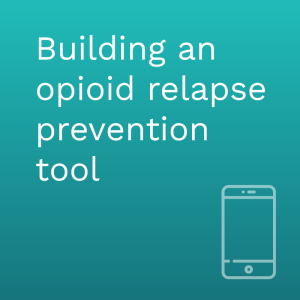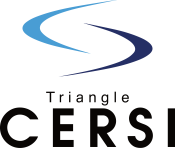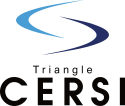DATACC BY DIME PROJECT

Building a digitally derived tool to prevent the relapse of OUD and combat the opioid epidemic

Opioid use disorder (OUD) is a public health epidemic – an estimated 5.7 million U.S. citizens and more than 40 million individuals worldwide suffer from OUD. In addition, the relapse rate is devastatingly high, leading to unacceptably high death rates.
The Digital Health Measurement Collaborative Community (DATAcc) by the Digital Medicine Society (DiMe), in partnership with the Duke BIG IDEAS Lab, and supported by a team of scientific and industry leaders, is collaborating on work funded by FDA through the Triangle CERSI to inform the development of a scalable and person-focused risk prediction tool for opioid relapse.
Are you ready to get involved in this project?
“Ownership in the hands of the person who might be struggling with opiate use so that they can be creating their own safety plan with a trusted individual that they choose [made possible by a relapse risk prediction tool]… I think that’s really beautiful.”
Combating an epidemic with digital innovation
We are laying the groundwork for a game-changing relapse prevention tool that has the potential to save tens of thousands of lives worldwide.
→ See cards below for details

DiMe and the BIG IDEAs Lab at Duke University conducted in-depth research, including a systematic review, stakeholder interviews, and a nationwide survey, to shape the research design and methods for developing the tool. Now, we’re running a focused pilot to collect the best possible data to build an opioid relapse prevention tool.

We are leveraging consumer sensor-based digital health technologies (sDHT) and data processing algorithms to develop a first-of-its-kind, sensor-derived relapse prevention tool that flags when a person is likely at risk of relapse and might need support.

This work has the potential to save the 81,000 lives lost every year and represents a critical step toward ending the opioid epidemic. The new relapse prevention tool will ensure that those living with OUD are empowered with critical information relevant to their recovery and get the support they need, when they need it.
Conducting compelling research
DiMe and the BIG IDEAs Lab at Duke University conducted in-depth research, including a systematic review, stakeholder interviews, and a nationwide survey, to shape the research design and methods for developing the tool. Now, we’re running a focused pilot to collect the best possible data to build an opioid relapse prevention tool.
Building an opioid relapse prevention tool
We are leveraging consumer sensor-based digital health technologies (sDHT) and data processing algorithms to develop a first-of-its-kind, sensor-derived relapse prevention tool that flags when a person is likely at risk of relapse and might need support.
Saving lives globally
This work has the potential to save the 81,000 lives lost every year and represents a critical step toward ending the opioid epidemic. The new relapse prevention tool will ensure that those living with OUD are empowered with critical information relevant to their recovery and get the support they need, when they need it.
In partnership with

Together, we are committed to saving lives and improving patient care by fearlessly tackling the opioid crisis.

![]()
For individuals striving to regain their health and productivity as part of opioid addiction recovery, preventing relapses is essential… Our Triangle CERSI program serves as the ideal platform for this work, bringing together academia, industry, and the FDA to address high-priority regulatory needs and accelerate solutions.
– Christin Daniels, Executive Director
Triangle Center of Excellence in Regulatory Science and Innovation (Triangle CERSI)

![]()
OUD is a complex challenge, and complex challenges require innovative collaboration and solutions. Our team is working to incorporate the many issues at play for those facing OUD and build a tool that can meaningfully change the arc of OUD relapse and save thousands of lives.
– Candice Taguibao, Associate Program Director
DiMe

![]()
Leveraging technological advancements to help develop evidence-based protocols for individuals living with OUD, as well as their families, loved ones, and care teams, will position these interventions for success. We’re proud to support this study by providing continuous health monitoring and personalized, data-driven insights.
– Shyamal Patel, Senior Vice President of Science
ŌURA

![]()
Digital tools give us a unique opportunity to detect early warning signs of events like OUD relapse and intervene before it happens. By harnessing continuous data from wearables and smartphones, we hope to be able to support people with OUD in real time, when and where they can benefit most.
– Jessilyn Dunn, Assistant Professor of Biomedical Engineering, Director
BIG IDEAs Lab, Duke University

![]()
Recovering from opioid use is not a solo journey, but requires an integrated system of personal, peer, and professional resources.
– Dr. Anthony Steele, Director of Medical Services
Alcohol and Drug Services (ADS)

![]()
Partnering with DiMe aligns with our mission to improve clinical trials through digital innovation. Together, we’re bringing digital solutions to the forefront of clinical research, creating streamlined, patient-centered experiences and empowering all participants with advanced tools and support.
– Chris Venezia, CEO
ProofPilot

![]()
Morse Clinics is excited to partner on this pilot to continue making strides to help individuals who experience opioid use disorder!
– Samantha Burggraf, Opioid Treatment Program Director
Morse Clinic of Zebulon
![]()
For individuals striving to regain their health and productivity as part of opioid addiction recovery, preventing relapses is essential… Our Triangle CERSI program serves as the ideal platform for this work, bringing together academia, industry, and the FDA to address high-priority regulatory needs and accelerate solutions.
– Christin Daniels, Executive Director
Triangle Center of Excellence in Regulatory Science and Innovation (Triangle CERSI)
![]()
OUD is a complex challenge, and complex challenges require innovative collaboration and solutions. Our team is working to incorporate the many issues at play for those facing OUD and build a tool that can meaningfully change the arc of OUD relapse and save thousands of lives.
– Candice Taguibao, Associate Program Director
DiMe
![]()
Leveraging technological advancements to help develop evidence-based protocols for individuals living with OUD, as well as their families, loved ones, and care teams, will position these interventions for success. We’re proud to support this study by providing continuous health monitoring and personalized, data-driven insights.
– Shyamal Patel, Senior Vice President of Science
ŌURA
![]()
Digital tools give us a unique opportunity to detect early warning signs of events like OUD relapse and intervene before it happens. By harnessing continuous data from wearables and smartphones, we hope to be able to support people with OUD in real time, when and where they can benefit most.
– Jessilyn Dunn, Assistant Professor of Biomedical Engineering, Director
BIG IDEAs Lab, Duke University
![]()
Recovering from opioid use is not a solo journey, but requires an integrated system of personal, peer, and professional resources.
– Dr. Anthony Steele, Director of Medical Services
Alcohol and Drug Services (ADS)
![]()
Partnering with DiMe aligns with our mission to improve clinical trials through digital innovation. Together, we’re bringing digital solutions to the forefront of clinical research, creating streamlined, patient-centered experiences and empowering all participants with advanced tools and support.
– Chris Venezia, CEO
ProofPilot
![]()
Morse Clinics is excited to partner on this pilot to continue making strides to help individuals who experience opioid use disorder!
– Samantha Burggraf, Opioid Treatment Program Director
Morse Clinic of Zebulon
In the news

ProofPilot Partners with Digital Medicine Society to Enhance Health

ŌURA Joins Groundbreaking Coalition to Help Prevent Opioid Relapse Using Wearable Tech

ProofPilot Partners with Digital Medicine Society to Enhance Health

Innovative Partnership to Tackle Opioid Crisis Using Technology

DiMe Launches Partnership to Combat Opioid Relapse Using Wearables

ProofPilot and DiMe partner to advance development of digital tools for trials

Oura and Google Fitbit partner with academia and others to battle opioid disorder

Oura joins forces with Google in opioid relapse prevention project

Q&A: Universities, tech collaborate to predict opioid overdose with wearables













